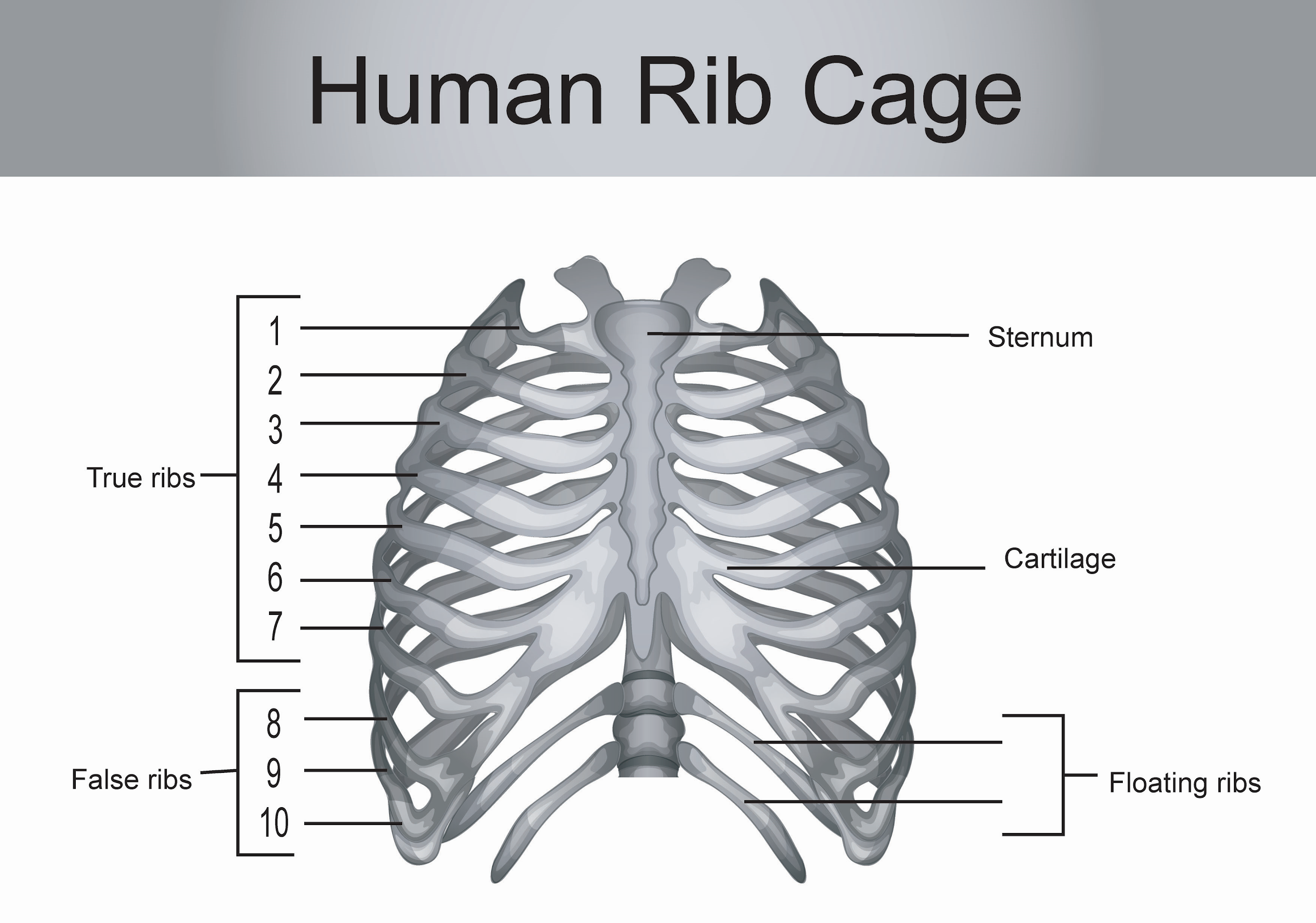
The floating ribs
(a) 11th and 12th
(b) 9th and 10th
(c) 7th and 8th
(d) 1st and 2nd
Answer
558.3k+ views
Hint: Floating ribs are the last two ribs. When it does not attach to the sternum (the breast bone) or to another rib, a rib is considered to be 'floating'.
Complete answer:
- Usually, there are 12 pairs of ribs in total. The building blocks of the spine (the vertebrae) in the back are connected to any pair of ribs. The 12 rib pairs consist of:
- True ribs: The first seven ribs are connected in the front of the sternum (breast bone) and are referred to as true (or sternal) ribs.

- False ribs: The lower five ribs are known as false ribs and do not attach directly to the sternum.
- Typically, however, the last two false ribs have no ventral attachment (no anchor in front at all) and are called floating, fluctuating, or vertebral ribs.
Additional information:
- The upper three false ribs are attached just above them to the costal cartilage of the ribs.
- In humans, the rib cage covers the thoracic cavity and protects the shoulder girdle to form the central portion of the human skeleton, also known as the thoracic cage.
- There are 24 ribs in 12 pairs, the sternum and xiphoid process, the costal cartilage, and the 12 thoracic vertebrae in a standard human rib cage.
- The rib cage makes up the thoracic wall along with the skin and associated fascia and muscles and provides attachments for the muscles of the spine, thorax, upper abdomen, and back. In the respiratory system, the rib cage has a significant role.
So, the correct answer is ‘(a) 11th and 12th’.
Note:
- Slipping rib syndrome is caused by floating rib hypermobility (8 to 12) that is not linked to the sternum but with ligaments connected to each other.
- Diagnosis is mainly clinical, and radiographic examinations are rarely needed.
Complete answer:
- Usually, there are 12 pairs of ribs in total. The building blocks of the spine (the vertebrae) in the back are connected to any pair of ribs. The 12 rib pairs consist of:
- True ribs: The first seven ribs are connected in the front of the sternum (breast bone) and are referred to as true (or sternal) ribs.

- False ribs: The lower five ribs are known as false ribs and do not attach directly to the sternum.
- Typically, however, the last two false ribs have no ventral attachment (no anchor in front at all) and are called floating, fluctuating, or vertebral ribs.
Additional information:
- The upper three false ribs are attached just above them to the costal cartilage of the ribs.
- In humans, the rib cage covers the thoracic cavity and protects the shoulder girdle to form the central portion of the human skeleton, also known as the thoracic cage.
- There are 24 ribs in 12 pairs, the sternum and xiphoid process, the costal cartilage, and the 12 thoracic vertebrae in a standard human rib cage.
- The rib cage makes up the thoracic wall along with the skin and associated fascia and muscles and provides attachments for the muscles of the spine, thorax, upper abdomen, and back. In the respiratory system, the rib cage has a significant role.
So, the correct answer is ‘(a) 11th and 12th’.
Note:
- Slipping rib syndrome is caused by floating rib hypermobility (8 to 12) that is not linked to the sternum but with ligaments connected to each other.
- Diagnosis is mainly clinical, and radiographic examinations are rarely needed.
Recently Updated Pages
Master Class 12 Business Studies: Engaging Questions & Answers for Success

Master Class 12 Economics: Engaging Questions & Answers for Success

Master Class 12 English: Engaging Questions & Answers for Success

Master Class 12 Maths: Engaging Questions & Answers for Success

Master Class 12 Social Science: Engaging Questions & Answers for Success

Master Class 12 Chemistry: Engaging Questions & Answers for Success

Trending doubts
What is meant by exothermic and endothermic reactions class 11 chemistry CBSE

Which animal has three hearts class 11 biology CBSE

10 examples of friction in our daily life

One Metric ton is equal to kg A 10000 B 1000 C 100 class 11 physics CBSE

1 Quintal is equal to a 110 kg b 10 kg c 100kg d 1000 class 11 physics CBSE

Difference Between Prokaryotic Cells and Eukaryotic Cells




